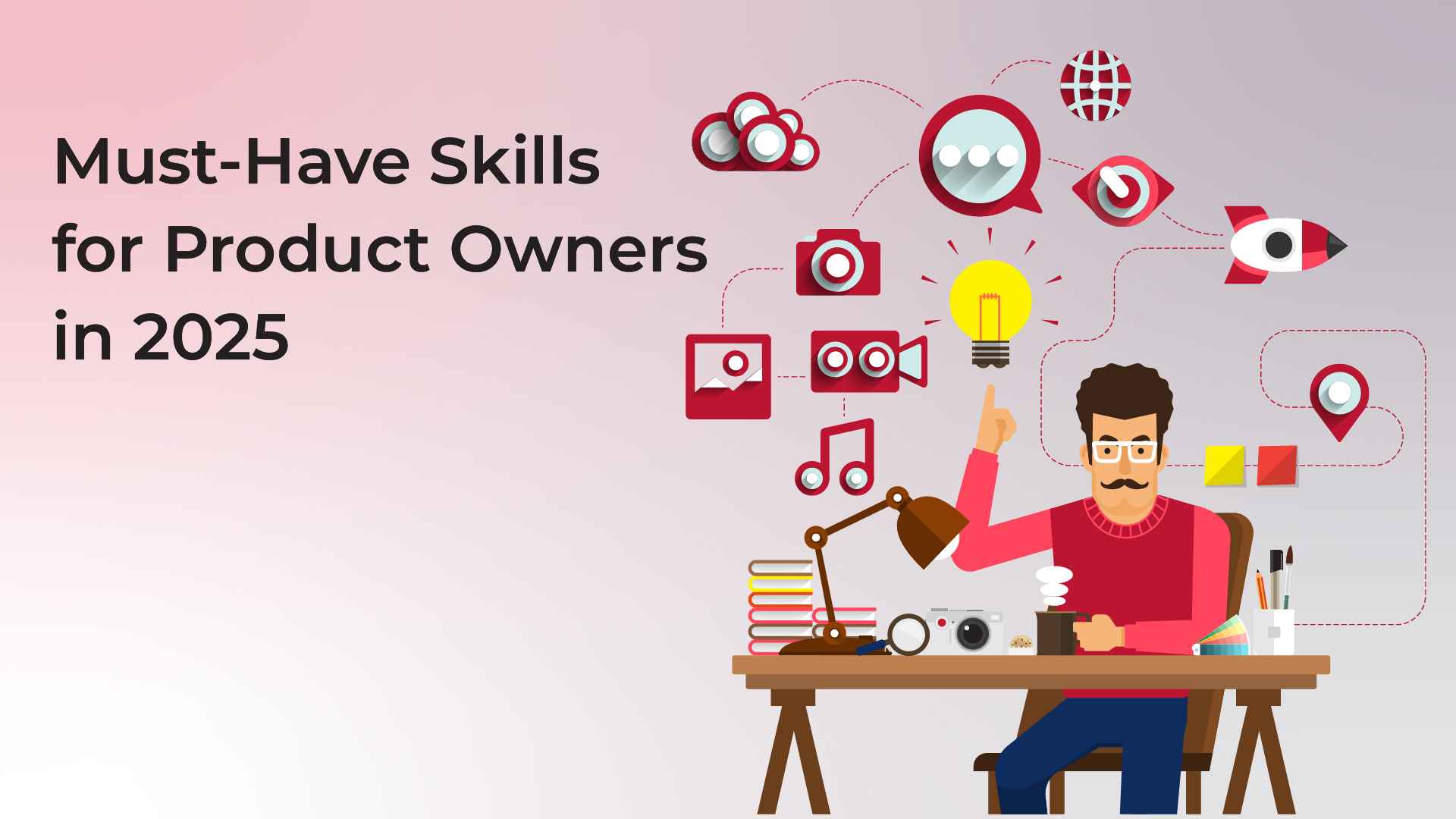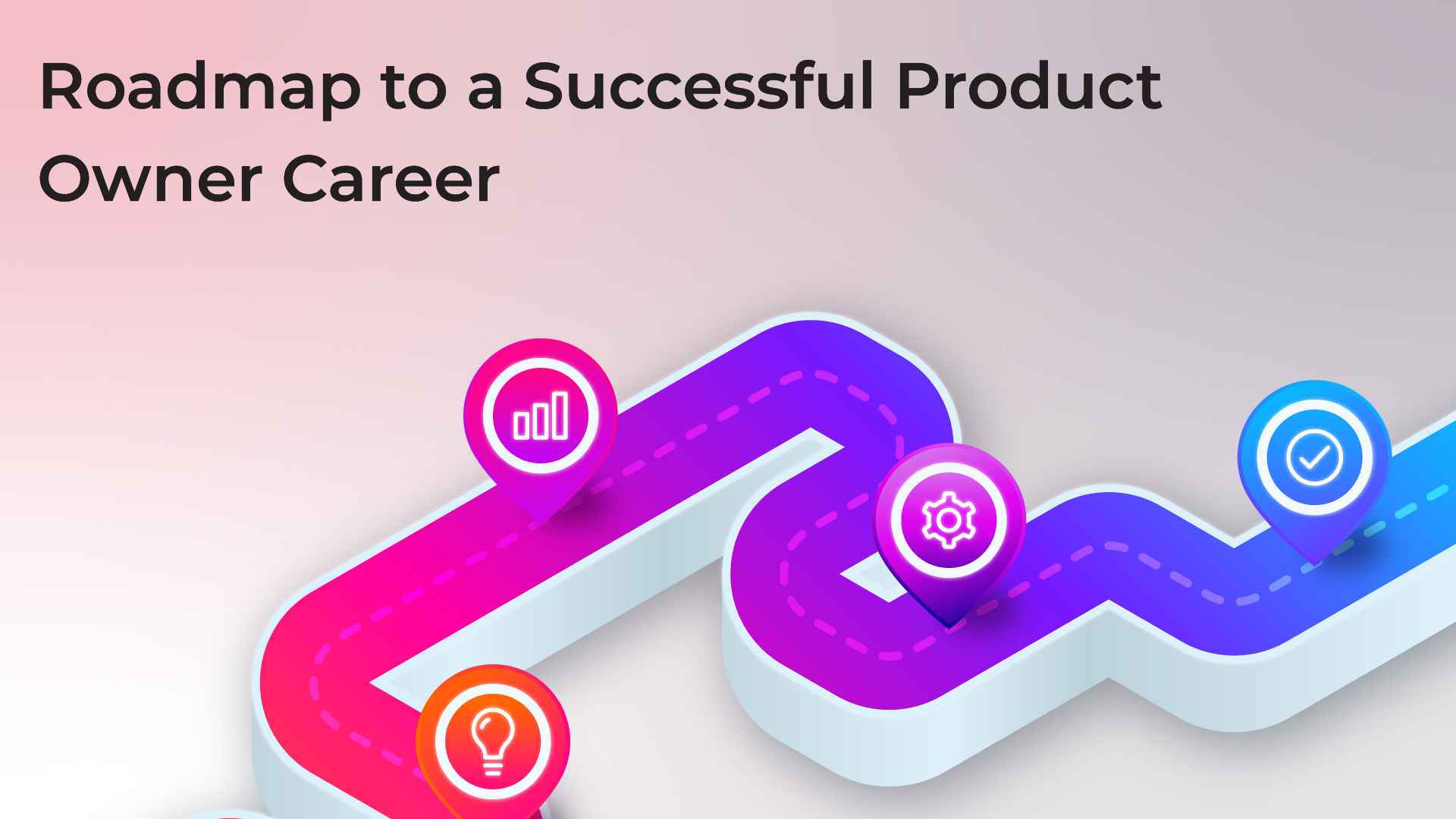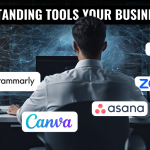Hello and welcome to our guide. If you want to be the top Product Owner in 2025, then this blog is for you! We’ll give you the best roadmap to reach the top 1%.

Working professionals were highly impacted in the year 2024, and AI changed our way of looking at jobs. Now, almost every job in 2025 is demanding AI proficiency because the companies could see that nearly everyone benefited from the change.
That makes a product owner’s role very crucial as to how they can adapt to this new change. Are they being more efficient? Could we see massive improvements in terms of backlog management or release training?
Whether you are a starting or an experienced product owner, this guide leads you through everything from the product owner career description in 2025 to the necessary skills and certificates that match the company’s profile. Let’s begin and see a step-by-step way to make you a pro in this changing career.
What Is a Product Owner?
A Product Owner is accountable for the success of a product, but their position is frequently misunderstood. Although the name implies they do not usually have real ownership of the product, most of the time, they don’t have the power to make decisions.
They spend most of their time documenting requirements imposed by stakeholders and not influencing the product vision.
In case you’re wondering what some of the common roles are, take a quick look:
- Backlog Management: Prioritizing features and bug fixes to work on first.
- Team Collaboration: Keeping developers, designers, and others in the team informed clearly.
- Market Research: learning about what the market wants and what the customer needs to steer product development.
- Vision Setting: Creating and communicating a shared vision of the product to all stakeholders.
It is creativity, leadership, and technical expertise. It is getting things done and having both the big picture and the smallest detail in mind.
Key Responsibilities and Duties of a Product Owner
Being a Product Owner in 2025 is not simple. It’s not keeping a to-do list; it’s guiding a product from conception to market. Here are some of the most frequent Product Owner activities:
- Prioritizing Features: Prioritize features that bring the most value to the customers.
- Communication: Keep everyone in the loop.
- Data-Driven Decisions: Make data-driven decisions on what features to implement next.
- Problem Solving: Fix issues promptly that would increase progress.
- Stakeholder Engagement: Listen to customers, partners, and team members.
Must-Have Skills for Product Owners in 2025

With evolving technology, Product Owner positions also change. The following are some 2025 Product Owner skills and Key skills for Product Owners 2025 which you should consider:
- Agile Methodologies: Study and become an expert in Scrum, Kanban, and Lean frameworks. These methodologies help keep projects lean and responsive.
- Clear Communication: Master clear and concise oral and written communication. This is useful in communicating ideas to technology teams as well as business stakeholders.
- Analytical Thinking: Get familiar with facts and figures. Use numbers and facts to make smart decisions.
- Stay Updated: Keep yourself updated about the latest trends like Agile practices or AI and its new models. It will make your job much easier.
- User-Centric Thinking: Think of the customer always. They are at the heart of the product.
Roadmap to a Great Product Owner Career

Your career as a product owner is yours to take, with plenty of learning and prospects. Below is a step-by-step roadmap to guide you on your journey:
1. Set a Solid Educational Background
Start by obtaining a business, computer science, or related degree. Any bachelor’s degree would be a start, but preferably, you need to have a Master’s degree. Now, is getting a degree still relevant in 2025? Yes and no, both. This kind of education provides you with a comprehensive understanding of the business and technical aspects of product development. But these days, you can pursue certification from top institutes like SAFe, Scrum or ICAgile. We’ll talk more about the difference between these certifications further in the blog.
2. Gain Hands-On Experience
Experience matters the most. Work in jobs where you see the product life cycle from ideation to delivery. We can guarantee that if you land a job as a Junior product manager, project coordinator, or business analyst, it will not just improve or profile. By doing these jobs, you get the experience of the job. You see your seniors and learn from them.
3. Obtain Industry-Respected Certifications
Some certifications are not as good as others. But when we see certifications from institutes like SAFe or Scrum. They showcase your credibility; there is no doubt about that. They show the employers that you have learned the skills and the processes.
Take a moment and see some of the most popular Product Owner certifications:
For your reference, we’ve done a full-fledged blog on this very topic, Best Certifications to Become A Certified Product Owner in 2025.
4. Build a Portfolio of Projects
Showcase your work with an impressive portfolio. Highlight your most remarkable successes and projects. Emphasize projects in which you worked with a team, improved a product, or solved a major issue. Your portfolio is your personal story and it should explain to the recruiter how your skills are very well aligned with the Product Owner job.
5. Network and Keep Learning
Be with product management teams and attend many workshops. I would appreciate you finding a local PO meetup. If not, look at the web forum, they are the best sources to learn new trends and best practices.
Top Companies and What They Offer

Some of the leading technology companies are seeking best-in-class Product Owners. Let us see what a couple of them are seeking and providing:
Microsoft
Product Owners at Microsoft tend to create enterprise software and cloud services. They are focused on developing tools that enable easy work and simplified tasks. If you work here, you can earn between $ 120K to $ 170K. Your work can vary from managing big projects to collaborating with teams globally and pushing the boundaries of technology.
Facebook (Meta)
Being a Product Owner at Meta is dynamic and challenging. Suppose you land a job there. You may be dealing with social media, digital ads, or virtual reality products. The work is high-speed, and the work requires ongoing innovation. One drawback could be that compensation is competitive, considering the high level of expectations and scope of the work.
IBM, SAP, Oracle, Salesforce, Adobe
These are firms at the top in the industry of enterprise software. As a Product Owner, you would be contributing to the designing and creation of software products that are crucial to the success of a business. You might be working on solutions in cloud space, analytics applications, or ERP systems. These positions in this firm are linked with a high workload and fantastic remuneration packages. They involve having complete business as well as technology awareness.
Netflix, Spotify, Uber, Airbnb
To work for companies such as Netflix or Spotify. You need the generic content knowledge; as a PO, you’d be delivering high-end user experience through content. Here, Product Owners concentrate on enhancing streaming sites, music platforms, or ride-sharing apps. The work is high-impact and quick-paced. The pay is also competitive, given the great impact these jobs have on customer satisfaction and business expansion.
All these companies have certain Product Owner role specifications. They are searching for team leaders who can make decisions based on data, lead teams, and continue innovating. If you want to be equal to these standards, you have to understand the current state of the latest trends thoroughly to excel at this job.
Final Thoughts: Your Journey Ahead
A career as a product owner is challenging and thrilling. In this article, we have taken you through what the role is, what skills you should have, and what you should do to be successful. As a successful product owner, you are constantly learning, constantly innovating, and continuously seeking ways to make the product and yourself better.
The way is clear:
- Begin with a solid educational foundation.
- Get some hands-on experience in similar jobs.
- Obtain major certifications such as Professional Scrum Product Owner Certification (PSPO™ ) or SAFe® 6 Product Owner/Product Manager (POPM) Certification.
- Build a strong body of work portfolio.
Network and Continue to Learn to Stay Ahead!
By doing all these, you can meet the new product owner’s job description in 2025 and outrank the standards of the top corporations. It may be daunting, but it is also incredibly rewarding. With every project that you manage and with every new skill you learn, you are getting closer to becoming one of the best product owners.
If you are ready for the challenge, then you must check out ValueX2’s – SAFe Product Owner/Product Manager (POPM) Certification & Training. Many working professionals have already changed their careers with this certification. It provides you with the best Agile tools and strategies, which are needed for you to become a successful product owner in 2025.
Frequently Asked Questions (FAQs)
Q: What is the Product Owner job description for 2025
A: It requires a combination of backlog management, good communication with teams, market exploration, and a clear product vision. These activities form the foundation of a Product Owner job description.
Q: How do certifications improve my professional reputation?
A: The certifications, such as PSPO, CSPO, or POPM, are needed for a high-paying job. It demonstrates a level of proficiency. Besides fulfilling the company’s Product Owner job requirements, these certifications set you at a strategic advantage.
Q: What’s my salary expectancy working as a Product Owner at major companies?
A: Salaries at companies are different. Microsoft and Apple, for example, usually pay between $120K and $170K annually. SMEs in the UK/US region have competitive positions with additional performance-based bonuses.
Q: What type of projects will I be working on as a Product Owner?
A: It will vary from company to company, but you could be working in cloud services, enterprise software, social media features, or user apps. Every project makes you navigate between technical detail and macro-strategy.

Bhavna is an Agile Coach and Consultant with over a decade of experience in advisory, corporate finance, IT assurance, and operations at Big 4 and within the industry in the UK and India. She has recently been the CEO of a start-up where she implemented agile practices within HR, Marketing, and Product teams.
She is also a SAFe® Practice Consultant (SPC) and authorized instructor for ICAgile Agility in HR (ICP-AHR), Agility in Marketing (ICP-MKG), and Business Agility Foundations (ICP – BAF) training courses. She provides training for agile transformation to corporate, public, and private batches, as well as consulting for enterprise agile transformation.






